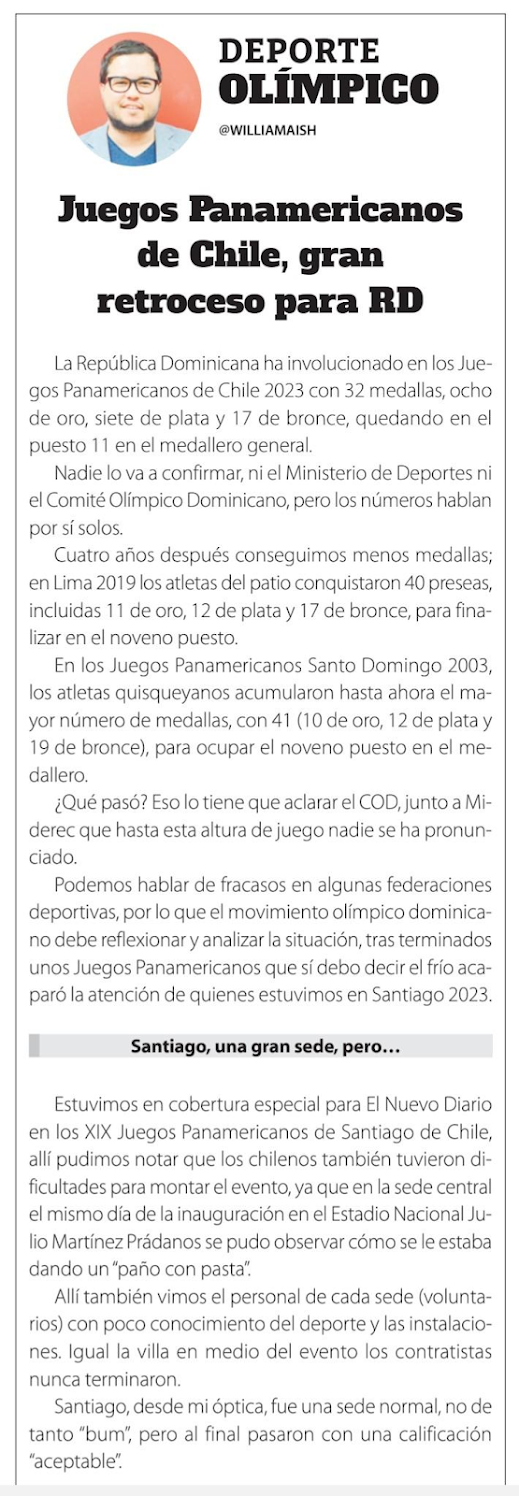Paginas
domingo, 31 de diciembre de 2023
viernes, 22 de diciembre de 2023
miércoles, 13 de diciembre de 2023
La actividad física necesita humanizarse antes de globalizarse / Physical activity needs to be humanized before it is globalized
Physical activity needs to be humanized before it is globalized
Latest News 30 NOV 2023
In response to a growing recognition worldwide of the importance of promoting physical activity to combat the effects of changing lifestyles and sedentary behavior, the World Health Organization (WHO), in 2018, launched the Global Action Plan on Physical Activity 2018-2030. Alongside this, initiatives like the Global Observatory for Physical Activity established in 2012 and the MOVE Congress held since 2009 promote research and programs about physical activity participation among all age-groups. Inactivity is now considered, and treated, as a ‘silent pandemic’ that can cause millions of deaths because of its role in the onset of non-communicable diseases and mental health illness. While this global effort is driven by commendable intentions and has the potential to significantly enhance both health and economic outcomes, one must acknowledge that the context of sedentary behavior varies considerably across communities and nations.
The Global Action Plan document defines physical activity as any bodily movement produced by skeletal muscle that requires energy expenditure. This might give the impression that activity is primarily a matter of choice or routine. However, in reality, energy expenditure is often economically and socio-culturally mediated based on living circumstances. While the document recognizes that utilitarian activity may not always provide mental and social benefits, its emphasis on the universal benefits of ‘all forms’ of physical activity fails to capture the complexities. In low and lower-middle income countries, individuals and communities, constrained by structural barriers and historical vulnerabilities, are compelled to 'move' for survival or their livelihood, even at the risk of harm, ill-health, and lifelong debility.
Let us consider a few examples. The two major conflicts currently - the Russo-Ukrainian War and the 2023 Israel-Hamas War have displaced millions of people, forcing them to ‘move’ (evacuate) at short notice to protect themselves and their families. Recently, a report threw light upon how plantation workers at Bangladesh struggled with severe heat and drought during work – an ironic scenario where they had to stay off physical activity to preserve their health. Climate change is similarly impacting millions of agricultural and construction workers in India where they comprise more than 50% of total rural male labor force. World over, UNCIEF has noted a rise child labor (with the COVID-19 pandemic having put an additional 9 million children at risk), engaged in activities that interfere with schooling and harm their physical, mental, social and/or moral development. The push for modern active lifestyles based on standardized ideas of recreation has challenged indigenous cultures who prefer not to compartmentalize work and leisure since active practices such as foraging forests and harvest festival celebrations already a part of their ‘way of life’.
These examples point to the fact that discussions on physical activity must accommodate alternate epistemologies. It is only when one has the choice “not to move” can the notion that one “ought to move” become meaningful. Throughout history, conflict and inequality have been characterized by a contest for leisure, demonstrating that a quest for power has essentially been a quest to control human movement, whether for building pyramids, raising children, or working at plantations and factories. Even today, millions of workers have a limited say in determining the labor-leisure trade-offs and women struggle with an unequal burden of domestic duties. Hence, assuming a ‘post-developed’ world normatively based on sedentary behavior is naive, as it overlooks these historical truths.
Promoting physical activity is still significant, and many individuals involved in physically intensive livelihoods may choose it willingly. However, addressing the dichotomy between choice and compulsion cannot be avoided. How can physical activity advocacy also apply to a child tasked with farm work after school or a plantation worker enduring long hours picking tea leaves or plucking coffee berries under the scorching sun? What about a construction worker engaged in strenuous labor or a community nurse walking miles to vaccinate children? Many such activities stem from generational impoverishment, colonial legacies, or entrenched social inequalities.
If a call to establish active societies must avoid reinforcing structural barriers, it must transcend reductionist perspectives. Societies need to be just before they are active. Economies need to be realigned to ensure universal access to peace, leisure and a respect for diverse recreational perspectives. Equal opportunities for cultural recognition, access to education and dignified livelihood need to be available to all communities. One needs to strive for a world where the choice to move, in ways that one prefers, is firstly an essential feature of life. Of course, this significantly broadens the mandate of global advocacy for physical activity, but it certainly makes it more meaningful.
About the author
Shreyas Rao is a learning design consultant, driven by a mission to make information and learning more accessible for individuals in grassroot sports. He currently works with sport-for-development organizations, sports federations, educational institutions and elite sport academies on aspects such as curriculum design, learning management, teacher/coach development programmes and digital marketing.
Original photo by Ahmed Akacha
____________________________________________________________________________________
La actividad física necesita humanizarse antes de globalizarse
30 NOV 2023
La propagación de una visión genérica de que es necesario alentar a las personas en todo el mundo a “desplazarse” para combatir el comportamiento sedentario margina las realidades de vida de quienes, como los refugiados, los trabajadores agrícolas y las tribus nómadas, se ven obligados a desplazarse para acceder a las necesidades básicas de la vida.
Este artículo fue enviado como parte de nuestra convocatoria de artículos sobre enfoques participativos en el deporte para el desarrollo. Para obtener más información y saber cómo enviar, lea la convocatoria de artículos.
En respuesta al creciente reconocimiento mundial de la importancia de promover la actividad física para combatir los efectos del cambio de estilos de vida y el comportamiento sedentario, la Organización Mundial de la Salud (OMS), en 2018, lanzó el Plan de Acción Mundial sobre Actividad Física 2018-2030. Junto a esto, iniciativas como el Observatorio Mundial de la Actividad Física establecido en 2012 y el Congreso MOVE celebrado desde 2009 promueven investigaciones y programas sobre la participación en la actividad física entre todos los grupos de edad. La inactividad ahora se considera y se trata como una “pandemia silenciosa” que puede causar millones de muertes debido a su papel en la aparición de enfermedades no transmisibles y enfermedades de salud mental. Si bien este esfuerzo global está impulsado por intenciones encomiables y tiene el potencial de mejorar significativamente los resultados económicos y de salud, hay que reconocer que el contexto del comportamiento sedentario varía considerablemente entre comunidades y naciones.
El documento del Plan de Acción Global define la actividad física como cualquier movimiento corporal producido por el músculo esquelético que requiere un gasto energético. Esto podría dar la impresión de que la actividad es principalmente una cuestión de elección o rutina. Sin embargo, en realidad, el gasto energético suele estar mediado económica y socioculturalmente en función de las circunstancias de vida. Si bien el documento reconoce que la actividad utilitaria puede no siempre proporcionar beneficios mentales y sociales, su énfasis en los beneficios universales de "todas las formas" de actividad física no logra captar las complejidades. En los países de ingresos bajos y medianos bajos, los individuos y las comunidades, limitados por barreras estructurales y vulnerabilidades históricas, se ven obligados a "desplazarse" para sobrevivir o ganarse el sustento, incluso a riesgo de sufrir daños, mala salud y debilidad permanente.
Consideremos algunos ejemplos. Los dos principales conflictos actuales: la guerra ruso-ucraniana y la guerra entre Israel y Hamás de 2023 han desplazado a millones de personas, obligándolas a “desplazarse” (evacuar) con poca antelación para protegerse a sí mismas y a sus familias. Recientemente, un informe arrojó luz sobre cómo los trabajadores de las plantaciones en Bangladesh lucharon contra el calor severo y la sequía durante el trabajo, un escenario irónico en el que tuvieron que abstenerse de realizar actividad física para preservar su salud. El cambio climático está afectando de manera similar a millones de trabajadores agrícolas y de la construcción en la India, donde representan más del 50% de la fuerza laboral masculina rural total. En todo el mundo, UNCIEF ha observado un aumento del trabajo infantil (la pandemia de COVID-19 ha puesto en riesgo a otros 9 millones de niños), que participan en actividades que interfieren con la escolarización y perjudican su desarrollo físico, mental, social y/o moral. El impulso a estilos de vida activos modernos basados en ideas estandarizadas de recreación ha desafiado a las culturas indígenas que prefieren no compartimentar el trabajo y el ocio, ya que prácticas activas como la búsqueda de comida en los bosques y las celebraciones del festival de la cosecha ya forman parte de su “forma de vida”.
Estos ejemplos señalan el hecho de que los debates sobre la actividad física deben dar cabida a epistemologías alternativas. Sólo cuando uno tiene la opción de “no moverse” puede adquirir sentido la noción de que “debe moverse”. A lo largo de la historia, el conflicto y la desigualdad se han caracterizado por una competencia por el ocio, lo que demuestra que la búsqueda de poder ha sido esencialmente una búsqueda de controlar el movimiento humano, ya sea para construir pirámides, criar niños o trabajar en plantaciones y fábricas. Incluso hoy, millones de trabajadores tienen una participación limitada en la determinación de las compensaciones entre trabajo y ocio y las mujeres luchan con una carga desigual de deberes domésticos. Por lo tanto, suponer un mundo “posdesarrollado” basado normativamente en un comportamiento sedentario es ingenuo, ya que pasa por alto estas verdades históricas.
La promoción de la actividad física sigue siendo importante y muchas personas involucradas en medios de vida físicamente intensivos pueden elegirla voluntariamente. Sin embargo, no se puede evitar abordar la dicotomía entre elección y compulsión. ¿Cómo puede aplicarse también la defensa de la actividad física a un niño encargado de trabajar en el campo después de la escuela o a un trabajador de una plantación que soporta largas horas recogiendo hojas de té o arrancando granos de café bajo el sol abrasador? ¿Qué pasa con un trabajador de la construcción que realiza un trabajo extenuante o una enfermera comunitaria que camina kilómetros para vacunar a los niños? Muchas de estas actividades surgen del empobrecimiento generacional, legados coloniales o desigualdades sociales arraigadas.
Si un llamado a establecer sociedades activas debe evitar reforzar las barreras estructurales, debe trascender las perspectivas reduccionistas. Las sociedades necesitan ser justo antes de estar activas. Es necesario realinear las economías para garantizar el acceso universal a la paz, el ocio y el respeto por las diversas perspectivas recreativas. Todas las comunidades deben disponer de igualdad de oportunidades de reconocimiento cultural, acceso a la educación y medios de vida dignos. Es necesario luchar por un mundo en el que la elección de moverse, en la forma que uno prefiera, sea, en primer lugar, una característica esencial de la vida. Por supuesto, esto amplía significativamente el mandato de la defensa global de la actividad física, pero ciertamente lo hace más significativo.
Sobre el Autor
Shreyas Rao es un consultor de diseño de aprendizaje, impulsado por la misión de hacer que la información y el aprendizaje sean más accesibles para las personas en los deportes de base. Actualmente trabaja con organizaciones de deporte para el desarrollo, federaciones deportivas, instituciones educativas y academias de deportes de élite en aspectos como el diseño curricular, la gestión del aprendizaje, los programas de desarrollo de profesores/entrenadores y el marketing digital.
Foto original de Ahmed Akacha.
jueves, 9 de noviembre de 2023
JUEGOS PANAMERICANOS DE CHILE, GRAN RETROCESO PARA REPUBLICA DOMINICANA / PAN AMERICAN GAMES IN CHILE, GREAT RETURN FOR DOMINICAN REPUBLIC
JUEGOS PANAMERICANOS DE CHILE, GRAN RETROCESO PARA
REPUBLICA DOMINICANA
miércoles, 8 de noviembre de 2023
SECRETARIO DEL COMITE OLIMPICO DOMINICANO LAMENTA LA FORMA ESCOGEN A LOS INMORTALES / SECRETARY OF THE DOMINICAN OLYMPIC COMMITTEE REGRETS THE WAY THE IMMORTALS WERE CHOSEN
martes, 7 de noviembre de 2023
DIA NACIONAL DEL DEPORTE - 7 de noviembre 2023
La fundación del Ministerio de Deportes trajo gran aceptación a los practicantes de las diferentes tradicionales disciplinas a mediados de los años setenta, sin embargo, la introducción de nuevos deportes y el incremento de la población nacional hace que hoy día el presupuesto asignado por ley a ese organismo estatal resulte insuficiente.
Todo indica que casi el 50 por ciento del presupuesto del Ministerio de Deportes esta comprometido en partidas asignadas a grandes eventos internacionales por medio del Comité Olímpico Dominicano y sus Federaciones Nacionales afiliadas.
lunes, 6 de noviembre de 2023
El sistema de un país, un voto ha contribuido a que el deporte mundial sea más corrupto / The system of one country, one vote has helped make world sport more corrupt
Helmut Digel: The system of one country, one vote has helped make world sport more corrupt
- By Helmut Digel
- Thursday, 26 October 2023
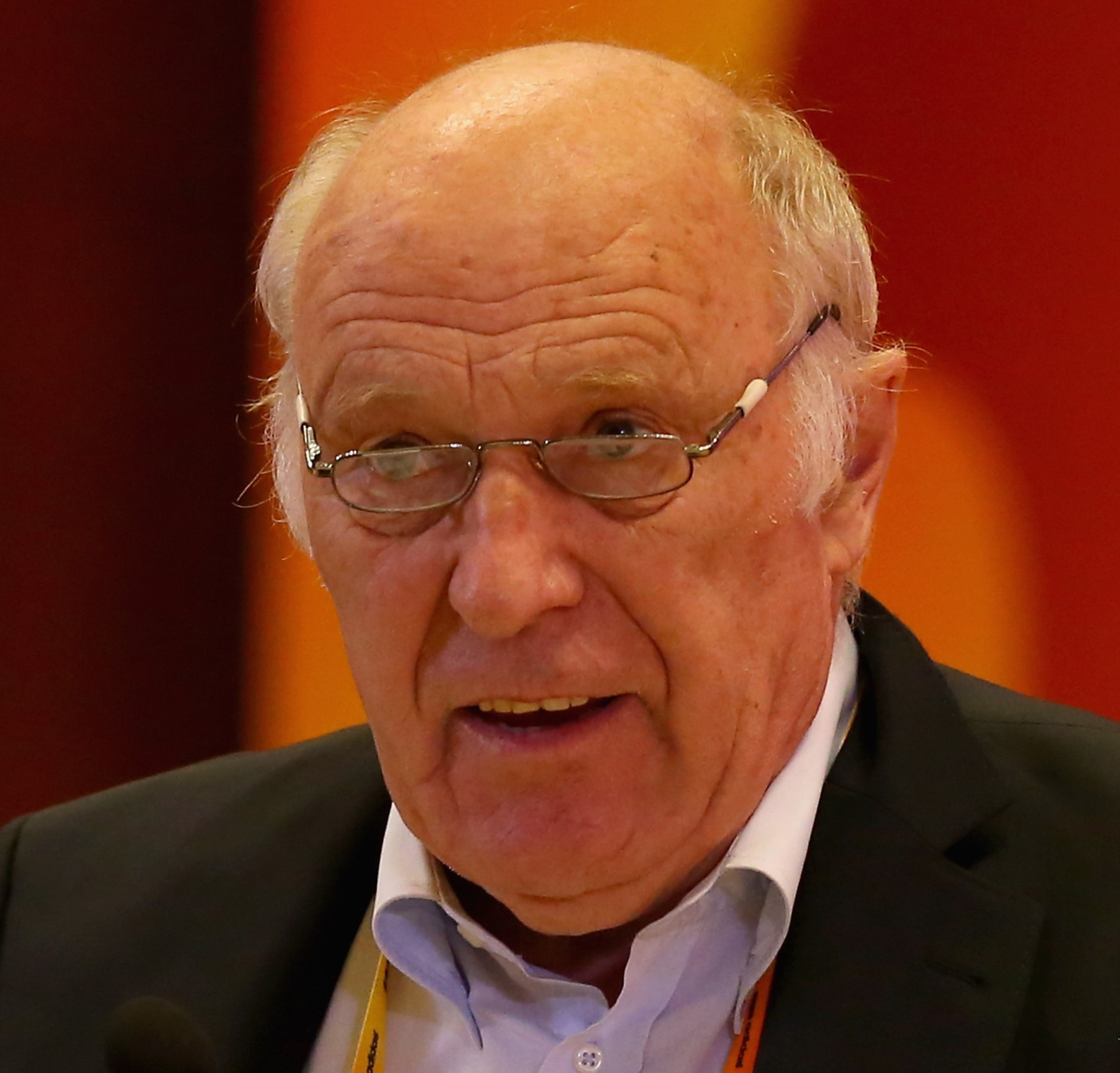
World sports organisations have been the focus of public criticism for some time.
At the Olympic Council of Asia, one Sheikh is replaced by the next, even though the International Olympic Committee (IOC) Ethics Commission had excluded the former and does not recognise the election of the latter.
At the International Ski Federation, Swedish/British entrepreneur and billionaire Johan Eliasch has been elected President without the support of the most important Alpine skiing nations.
In elections to the highest offices, there are repeated allegations of vote-buying at the congresses in order to secure majorities for the election of power-hungry people for whom sport is only a plaything and their toy.
If we look a little closer at the organisations of world sports, if we follow their development over several decades, we can see that the leading positions in the International Federations are coveted objects of desire for people in search of power.
This lust for power goes hand-in-hand with a variety of vested interests that people seek to satisfy by means of sport.
In the meantime, it is becoming less and less likely that personalities will be elected to the leading positions in sports who are exclusively oriented toward the cause itself and are also distinguished by a corresponding level of professional competence.
If one asks why and how such a development in sports organisations could become possible, one has to take a look at their statutes and consider the regulations that govern elections to the highest offices in sports.
In the past, all Olympic sports controlled by Europeans as the vast majority, such as hockey, equestrian, handball, athletics, or swimming, had for decades been practiced predominantly in Europe or in the United States.
It was customary to observe a principle of delegation to the governing bodies of the sport in which the interests of the athletes were primarily represented. Countries that had many active athletes therefore had more influence compared to today.
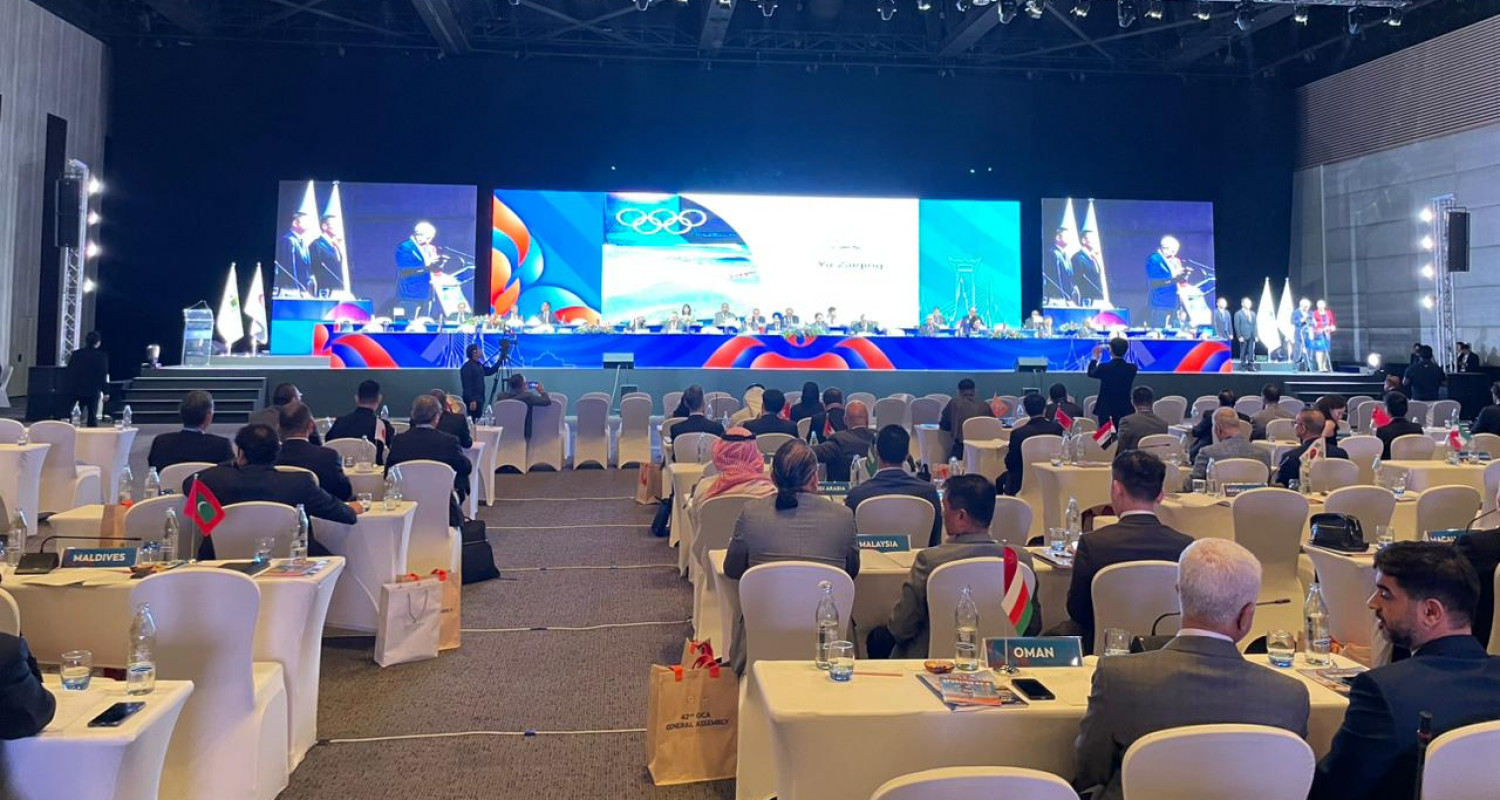
Today, that is not really the case. It can still be found in elections in some Federations of European nations, including Germany. In the elections to the German Olympic Sports Confederation (DOSB), for example this principle of vote distribution is still followed. At the Annual General Meeting of the DOSB, the German Football Association has considerably more votes than an organisation with comparatively few members.
This principle of democratic delegation was increasingly called into question at the international level in the 1960s and 1970s when no longer the number of active members should be the basis of the democratic structure within a governing body.
As a democratically superior principle, the maxim "one country - one vote" became the demand, which remained unheard in International Federations for a long time.
The decisive factor for the change was the fact that increasingly power-hungry Europeans took advantage for this new democracy movement in order to secure their power for as long as possible.
Authoritarian personalities such as Primo Nebiolo, the late President of the International Association of Athletics Federations (IAAF), Sepp Blatter, the former head of FIFA, and a number of other leaders used the "noble ideal of democracy" to cement their power.
All their descendants today act and walk on the same path.
In the past decade, almost all Olympic International Federations have increased their membership to more than 150 countries, with the vast majority of members often having only a very few athletes practicing the sport in question.
Some of these members exist only on paper but their representatives enjoy the benefits of being part of the International Federation, even though the sport itself is almost hardly practiced in their country.
An even more far-reaching consequence of this system is the emergence of leaders from emerging nations coming to power with the help of other emerging countries.
It has been observed for quite some time that in this way certain regions of the world are gaining an extraordinary power in terms of leadership decisions, which is hardly theirs in the first place.
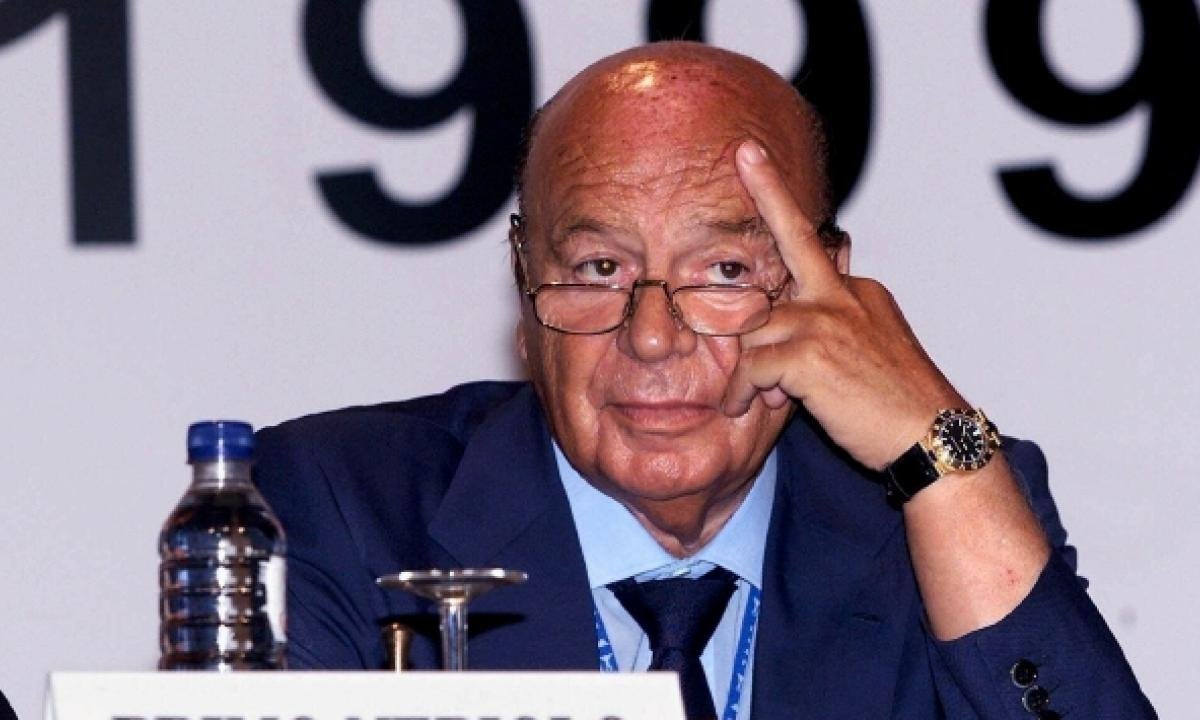
There are, for example, 50 African votes which are a decisive factor in the allocation of almost every important sports policy position. It is, therefore, increasingly likely that own candidates from these regions will reach positions of power, for example Lamine Diack at the IAAF following Nebiolo’s death, or Hassan Mustafa with his election as the first non-European President of the International Handball Federation.
Candidates from the major sports nations, on the other hand, will have less and less chance of reaching decisive leadership positions in the future.
Under the democratic ideal of "one country - one vote" it has become very easy for power-hungry people to manipulate the system, which each member country has, in the interest of their own power.
If we look at the vast majority of members at most International Federations, we have to realise that, for example, of the 210 Member Federations at FIFA or World Athletics, the new name for the IAAF, only one third probably have properly constituted organisations.
Many delegates who represent their National Federation in the elections are often unfamiliar with the problems and questions of their sport.
It also happens more and more often that delegates vote on the future of a sport who have almost no athletes in their own National Federation.
In addition, it is becoming more and more common for delegates to have a vote at the electoral congresses of International Federations to have been selected by their Government at home.
In many countries, it is also common for the respective Government and Ministry responsible for sports to decide which candidates will run for leadership positions in International Federations and what role they will play.
In China, it is customary for all of its international representatives to be controlled extremely closely or face being replaced.
It seems the vast majority of delegates attending International Federation meetings are only indirectly affected by the actual business of what they do. The organisation of World Championships or other major sporting events are irrelevant topics for many of the delegates.
Discussions about doping, marketing and the sale of television rights often remain abstract for the representatives of the smaller federations. Against this background, it is not surprising that the vote they have to cast at the congresses can very quickly become a manoeuvring mass for manipulation.
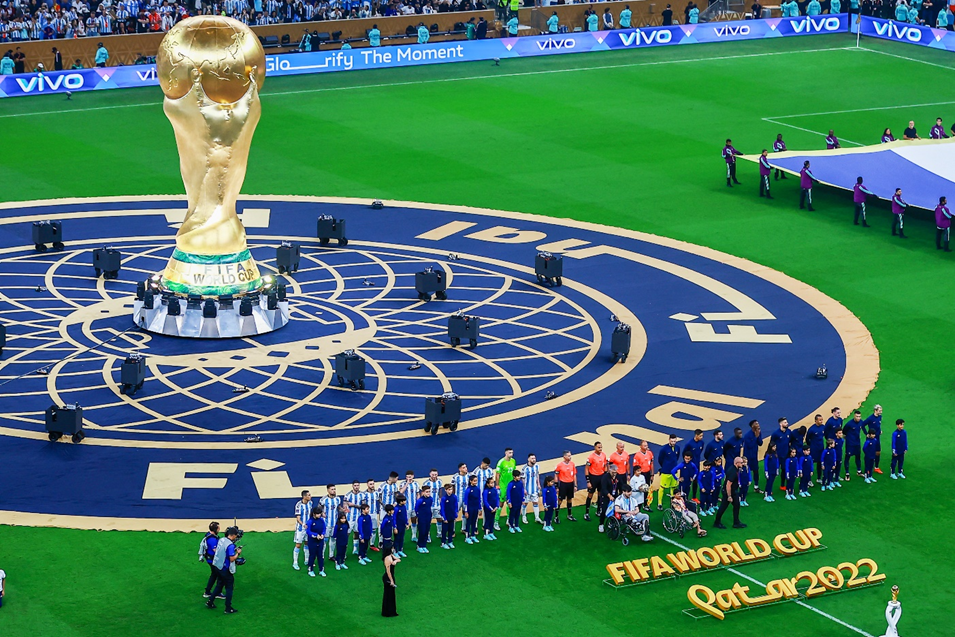
Almost all elections for leadership positions in International Federations have recently been associated with rumours about how the successful candidate won.
Bribery can take many forms, and the fact that delegates are sympathetic to the powerful does not necessarily mean that financial payments are involved.
The abuse of democracy in Olympic sports organisations could have severe consequences.
This abuse of power has the effect of constantly increasing the likelihood that non-expert personalities will run the sport. The effect of this is that ever-greater risks are taken in terms of managing sport development in the sports themselves.
This also has the consequence that only economic interests shape the sports policy actions of these organisations.
World Championships are therefore more and more being awarded not because they are the best bid for the sport, but instead are being increasingly shaped by externally controlled political interests.
Those running International Federations are often becoming oligarchies and evading all controls.
Many of the world's International Federations now operate in a legal vacuum that are subject to little scrutiny. The management principles of "good governance" and "financial transparency" that are applied to them from the outside are probably represented to the outside world via a well-organised and well-funded public relations campaign.
The danger that sports have become the plaything of powerful people who primarily serve their own interests has increased considerably in recent years. It is already foreseeable that the economic foundations of many Olympic sports associations will be jeopardised in this way. Necessary investments in the modernisation of sports are rarely made, and the Olympic Federations are becoming increasingly dependent on the IOC.
It is obvious that dissatisfaction is growing within sport, expressed above all by the athletes, who are increasingly affected by the fatal development of the organisations, since the current management policy is to the detriment of them and their competition.





